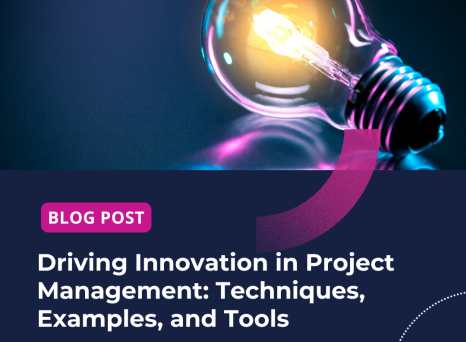This week's guest blogger for Planisware; Brad Barbera of Pi Innovation LLC explains.
The test of a first-rate intelligence is the ability to hold two opposed ideas in the mind at the same time, and still retain the ability to function.
~F. Scott Fitzgerald
There is a thin line between genius and insanity. I have erased this line.
~Oscar Levant
Get out your erasers if you want to be effective innovators. If having multiple personalities is a form of insanity, and holding opposing ideas simultaneously is genius, then you, too, will have to erase the line between genius and insanity to create project teams that innovate.
Innovation is a team sport, requiring a complete set of professional skills (Marketing, Sales, Engineering, Supply chain, Distribution, Packaging, Information Technology, Service Delivery, and the like). But it also requires a set of roles based more on thinking style and personality than on functional responsibility.
On one end of the spectrum, innovation requires people who are good at “doing things better.” These are people who like to solve problems, using tried and true ways. They are detail-oriented and grounded in reality and project plans. We’ll call them “Executors.”
On the other end of the spectrum, innovation requires people with a knack for “doing things differently.” These are the folks that search for problems, and approach solutions from unusual angles. They tend to be conceptual, big-picture thinkers, with little reverence for the status quo, confidently generating new ideas. Let’s call them “Explorers.”
And that’s where the insanity comes in.
These two types drive each other nuts. An extreme executor would describe an extreme explorer as an impractical, confusing, out-of-touch with reality, an abrasive quack. An extreme explorer would describe an extreme executor as a dogmatic, timid conformist. They each think the other is, well, insane.
You need both perspectives to innovate – both the reality side and the novelty side. But if these folks are like oil and water, how do you get them to work together effectively?
That’s where the third type comes in. The Chameleon.
These Chameleons are the in-between group on the continuum between Executors and Explorers. They can relate to both sides and help each understand the perspective of the other, helping them to understand each others' goals and objectives. Chameleons are the emulsifier for the Executor's oil and the Explorer’s water. They are the eggs that make the team mayonnaise and deliver project success.
To see the importance of the Chameleon role, consider the case of General Dwight D. Eisenhower being selected as the Supreme Commander of the Allied Forces in Europe. He was not selected because of his proven strategic abilities, nor for a history of combat success, but as a good leader. Prior to World War II, his had a rather undistinguished military career. But in that career, he demonstrated skills in organization and diplomacy that were critical for the task at hand. He had to manage differences between national cultures and powerful personalities, often with dramatically opposing perspectives, including such people as Roosevelt, Churchill, Patton, Montgomery, de Gaulle, and Marshall.
To have a successful innovation team, you need a balance of Executors, Explorers, and Chameleons. These three types can often be identified by good project leadership, and simple observation of performance. There is also a tool that can be used to help identify where people fall on the spectrum: The Kirton Adaption-Innovation Inventory.
Whatever way you go about identifying the perspectives of the people on the team, remember to:
- Ensure you have the functional expertise required to get the innovation implemented;
- From the pool of people available, select a team that has a balance of Executors, Explorers, and Chameleons;
- Have clear project objectives and project management processes in place.
- Appoint an effective project manager and project leader (preferably a Chameleon by nature);
- Ensure that all team members will be recognized and rewarded equitably.

